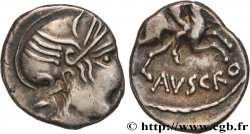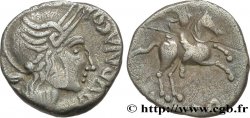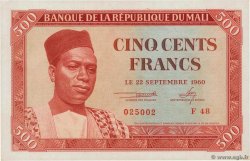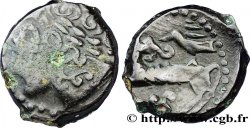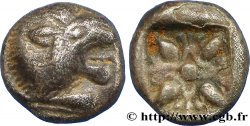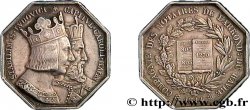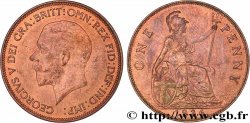Back 1/1
E-auction 24-6978 - bga_149280 - GALLIA - RHONE VALLEY Denier au cavalier AMBIL / EBVRO
You must signin and be an approved bidder to bid, LOGIN TO BID. Accounts are subject to approval and the approval process takes place within 48 hours. Do not wait until the day a sale closes to register. Clicking on « bid » constitutes acceptance of the terms of use of cgb.fr private e-auctions.
Bids must be placed in whole Euro amounts only. The sale will start closing at the time stated on the item description; any bids received at the site after the closing time will not be executed. Transmission times may vary and bids could be rejected if you wait until the last second. For further information ckeck the E-auctions F.A.Q.
NO BUYER'S FEE.
NO BUYER'S FEE.
| Estimate : | 280 € |
| Price : | 59 € |
| Maximum bid : | 91 € |
| End of the sale : | 30 September 2013 15:13:30 |
| bidders : | 8 bidders |
Type : Denier au cavalier AMBIL / EBVRO
Date: c. 75 AC.
Metal : silver
Diameter : 14,5 mm
Orientation dies : 11 h.
Weight : 2,15 g.
Rarity : R2
Coments on the condition:
Flan large pour ce denier légèrement décentré au revers, mais complet au droit. Belle patine sombre
Catalogue references :
Obverse
Obverse legend : AMBILLI.
Obverse description : Tête casquée de Rome à droite, le casque ailé.
Reverse
Reverse legend : [EBVRO].
Reverse description : Cavalier galopant à droite, le manteau flottant sur l'épaule, tenant une lance de la main droite.
Commentary
Ce type de tête est bien caractéristique ; dans le CRN6 les n° 216 à 232 (BRIC / COMA et COSII / COMA) de la trouvaille de la Cathédrale Saint-Pierre ont le même type de tête.
Ce type de tête avec AMBIL devant le visage semble ne pas avoir été repris dans le CRN6, ni par J.-P. MATIZ et J.-L. BUATHIER (ces dernier n'ont ce tyo de tête que pour leur type E4, COSII / CALITIX = LT. 5859). Pour cet exemplaire, la légende AMBI est clairement lisible au droit. Pour ce qui est de la légende du revers, nous pouvons restituer EBVRO à partir d'un exemplaire de ce même type mais mieux centré vu par S. GOUET. Le dessin LT 5731 montre ce même genre de tête, mais avec la légende AMBILO / EBVRO ; cette monnaie est classée, sans aucune distinction de style, au type 5c alors que l'illustration 1 pl. V n'y correspond pas du tout.
Ce type de tête avec AMBIL devant le visage semble ne pas avoir été repris dans le CRN6, ni par J.-P. MATIZ et J.-L. BUATHIER (ces dernier n'ont ce tyo de tête que pour leur type E4, COSII / CALITIX = LT. 5859). Pour cet exemplaire, la légende AMBI est clairement lisible au droit. Pour ce qui est de la légende du revers, nous pouvons restituer EBVRO à partir d'un exemplaire de ce même type mais mieux centré vu par S. GOUET. Le dessin LT 5731 montre ce même genre de tête, mais avec la légende AMBILO / EBVRO ; cette monnaie est classée, sans aucune distinction de style, au type 5c alors que l'illustration 1 pl. V n'y correspond pas du tout.







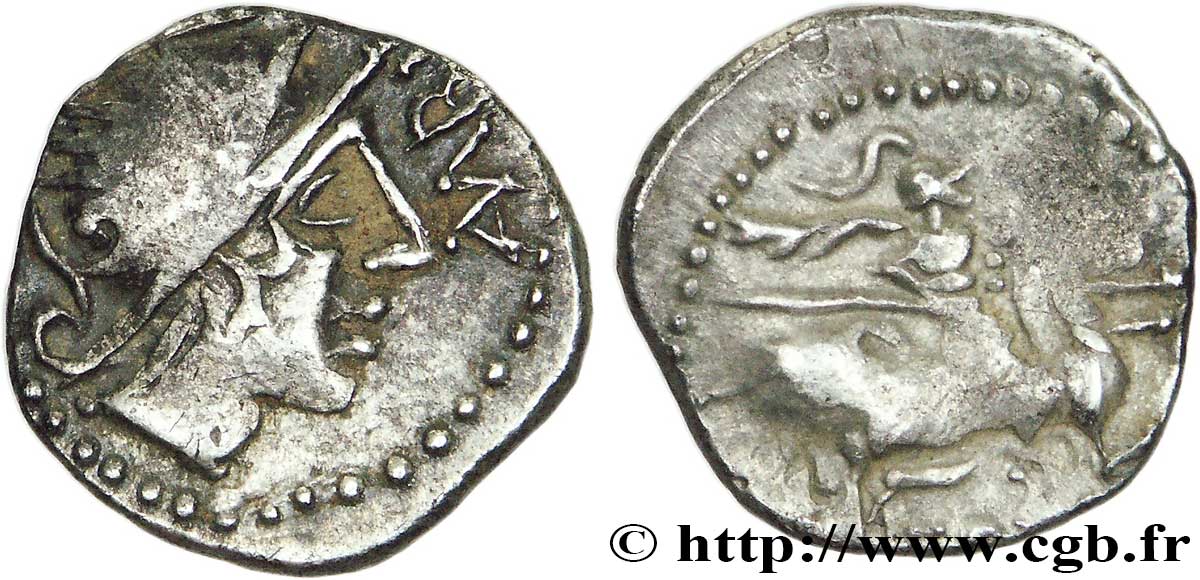
 Report a mistake
Report a mistake Print the page
Print the page Share my selection
Share my selection Ask a question
Ask a question Consign / sell
Consign / sell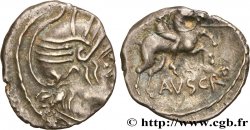
 Full data
Full data

